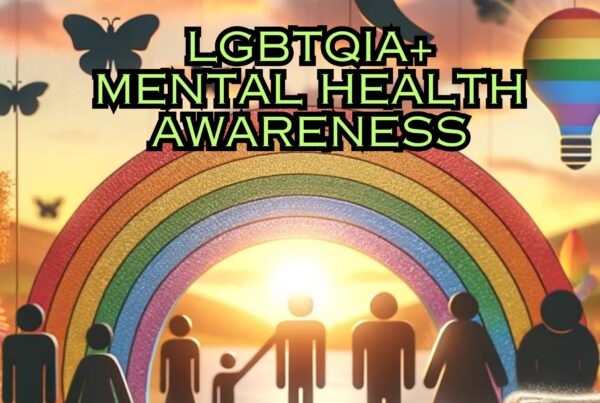Understanding and Overcoming the Loneliness Epidemic
Overcoming Loneliness
Loneliness is not just a fleeting feeling; it’s a pervasive epidemic that has been silently affecting our society for decades. Described as the subjective sense of being less connected to others than we desire, loneliness varies greatly from physical isolation. You can feel lonely in a bustling city, within a marriage, or even in a crowd. Conversely, solitude can be blissful for someone alone on a mountaintop. This blog explores the depths of loneliness, its causes, and how we can navigate through this invisible epidemic to assist in overcoming loneliness.
The Evolution of Loneliness: A Historical Perspective
Since the 1950s, there has been a noticeable decline in our investment in interpersonal relationships. Studies indicate that anywhere from 30% to 60% of individuals report feeling lonely frequently. This condition is most prevalent among young adults aged 16 to 24 and older adults who experience loss of companionship due to various life changes. Interestingly, loneliness knows no borders, affecting all age groups, income levels, and demographics globally.
Contributing Factors to the Rise of Loneliness
Several factors contribute to this growing sense of disconnection. The shift towards a more mobile society has disrupted traditional networks of family and friends as people relocate for jobs and education. While these moves offer opportunities, they also detach individuals from their inherent communities.
The advent of television and later the digital revolution intensified this disconnection. Our attention, increasingly captured by screens and digital content, has diverted from the people around us. The design of these technologies, aimed at holding our attention, often leads to a decline in community engagement and face-to-face interactions.
The Health Impacts of Loneliness
The health ramifications of loneliness are startling. Research by Julianne Holt-Lunstad reveals that loneliness can be as detrimental to health as smoking half a pack of cigarettes daily. The stress induced by loneliness may lead to physical health issues, and those who are lonely later in life often experience more rapid brain decline. This underscores the importance of addressing loneliness not just for mental well-being but also for physical health.
Historical and Cultural Perspectives on Loneliness
Throughout history, loneliness has been perceived and managed differently across cultures. In some ancient societies, solitude was often revered, associated with spiritual enlightenment and deep introspection. For instance, in many Eastern philosophies, seeking solitude is seen as a path to inner peace and wisdom. In contrast, Western cultures have traditionally placed a higher value on social interactions and community life. Understanding these varied historical and cultural perspectives on loneliness can help us appreciate that feeling lonely is not a uniquely modern experience, and that there are many time-tested ways to cope with it.
In today’s globalized world, cultural interpretations of loneliness continue to vary. Some cultures view it as a personal failing, while others see it as an inevitable part of the human condition. The acknowledgment and acceptance of loneliness in some societies contrast sharply with the stigma it carries in others. These cultural lenses influence how individuals perceive their own experiences of loneliness and seek help, making it important to consider these perspectives in any discussion about combating loneliness.
The Role of Technology in Loneliness
The advent of digital technology and social media has significantly impacted how we interact and form relationships. While technology has made it easier to connect with others across distances, it has also been criticized for creating a sense of superficiality in relationships. The paradox of social media is that while it provides the illusion of connectedness, it often leads to feelings of social isolation and comparison, exacerbating loneliness for many. Understanding this double-edged nature of technology is crucial in addressing modern loneliness.
On the positive side, technology can be a lifeline for those who are physically isolated or have difficulty forming in-person relationships due to anxiety, disability, or other barriers. Online communities and support groups can provide a sense of belonging and connection for people with niche interests or specific challenges. Video calls and messaging apps allow for maintaining long-distance relationships. Balancing the use of technology with face-to-face interactions is key to harnessing its benefits while mitigating its potential for increasing loneliness.
Mental Health and Loneliness
Loneliness and mental health are intricately connected. Chronic loneliness can lead to a range of mental health issues, including depression, anxiety, and decreased self-esteem. It can create a vicious cycle where loneliness exacerbates mental health problems, which in turn, make it harder to seek out and maintain social connections. Understanding this interplay is essential for addressing both loneliness and the mental health issues that arise from it.
Conversely, existing mental health conditions can also contribute to feelings of loneliness. Conditions like social anxiety or major depressive disorder can make social interactions challenging and overwhelming, leading to a retreat into isolation. Recognizing the signs of mental health issues in the context of loneliness is important for seeking appropriate treatment and support. Interventions like therapy, medication, or a combination of both can be effective in breaking this cycle and helping individuals reconnect with others.
Loneliness in Various Life Stages
Loneliness manifests differently at various stages of life, each presenting unique challenges and solutions. For adolescents and young adults, loneliness can stem from identity issues, peer pressure, and the struggle to fit in. This age group might benefit from activities that promote self-expression and connection, like clubs, sports, and youth groups. For young adults, major life transitions such as starting college or a new job can be isolating, and finding communities with shared interests can be crucial.
In midlife and old age, loneliness often results from significant life changes like retirement, loss of a spouse, or children leaving home. For older adults, community centers, senior groups, or volunteering can provide meaningful social interaction. In all life stages, acknowledging the changing nature of relationships and the need for social connection is vital in preventing and addressing loneliness.
Loneliness in the Workplace
The workplace is a significant social environment for many, and how it is structured can greatly affect feelings of loneliness. In traditional office settings, the design of workspaces, opportunities for collaboration, and company culture play crucial roles in fostering or hindering social connections. A supportive and inclusive workplace can reduce feelings of isolation among employees. With the rise of remote work, employers need to find innovative ways to maintain team cohesion and a sense of belonging among remote workers.
Creating a workplace that combats loneliness involves more than just physical space; it’s about nurturing a culture of connection and support. Regular team-building activities, open communication channels, and a focus on employee well-being can help. For remote workers, virtual coffee breaks, regular check-ins, and digital team events can keep the sense of community alive. Acknowledging the importance of social connections at work is crucial in combating workplace loneliness.
Strategies for Building Community and Connection
Building community and fostering connections are effective strategies against loneliness. Community-building can take many forms, from neighborhood projects to joining clubs or groups with shared interests. Participating in local events, volunteering, or simply spending time in communal spaces like parks or cafes can help foster a sense of belonging. These activities not only provide opportunities to meet new people but also help individuals feel more integrated into their local community.
Another effective strategy is to actively seek out and create meaningful connections. This can involve deepening existing relationships or making an effort to meet new people. Simple actions like initiating conversations, showing interest in others, and being open to new experiences can go a long way. Building connections doesn’t always mean forming deep bonds; even casual, friendly interactions can significantly reduce feelings of loneliness.
The Role of Pets and Nature in Combatting Loneliness
Interaction with pets and nature can play a significant role in alleviating loneliness. Pets provide companionship, unconditional love, and a sense of responsibility, which can be particularly beneficial for those living alone. The act of caring for a pet can bring structure to daily life and offer opportunities for social interaction with other pet owners. Similarly, spending time in nature, whether it’s a walk in the park or gardening, can provide a sense of connection to the larger world and offer a peaceful retreat from the hustle of daily life.
The therapeutic benefits of nature and pets are well-documented. Being in nature can reduce stress, improve mood, and enhance feelings of well-being. Pets, especially dogs and cats, are known to reduce feelings of loneliness and increase social interaction. They can also provide a sense of purpose and fulfillment. Incorporating these elements into daily life can be a simple yet effective way to combat loneliness.
Building Bridges: Combatting Loneliness
The solution to loneliness isn’t found solely in deep, intimate relationships. Every interaction, no matter how small, plays a part. The mail carrier, the grocery store cashier, and casual acquaintances all contribute to our sense of belonging. Simple, personal interactions with these individuals can significantly impact our feelings of connectedness.
Many who experience loneliness fear rejection and may inadvertently push others away. Cognitive Behavioral Therapy (CBT) can be effective in teaching social skills and altering assumptions about being unwanted. For those feeling lonely and apprehensive, engaging in comfortable activities around others can be a starting point for building connections.
The Loneliness Crisis
This blog is based upon the contents of this video by Harvard professor, Robert Waldinger.
Hypnotherapy and ACT: Therapeutic Approaches to Loneliness
In the realm of hypnotherapy and Acceptance & Commitment Therapy (ACT), there are unique tools to combat loneliness. Hypnotherapy can access the subconscious mind, helping to reframe negative beliefs about oneself and social interactions. ACT emphasizes accepting one’s feelings without judgment, encouraging engagement with life and fostering meaningful relationships.
Remember, at Release Hypnosis Melbourne Hypnotherapy, we understand the intricacies of human emotions and connections. Since 2016, Lawrence Akers has been offering Hypnotherapy and ACT-based work to those in Melbourne and online. Conveniently located on St Kilda Rd, accessible by the ANZAC station train and tram stop, Release Hypnosis is here to assist with a wide range of issues. We also offer a free 30-minute no-obligation discovery call for those unsure if hypnotherapy is the right path for them. Learn more about how we can help.
Book Your FREE 30 Minute Consultation With Release Hypnosis NOW!
You may also like to read:
Discovering Purpose and Values: A Path to Mental Well-being
Can’t Visualise in Hypnosis? Here’s What You Can Do Instead.
Dealing with Financial Stress and Crisis: Finding Peace Amid Turbulence
What Is The Success Rate of Hypnosis?
Release Hypnosis Melbourne Hypnotherapy is accessible for people in: Abbotsford, Armadale, Albert Park, Balwyn, Bentleigh, Black Rock, Box Hill, Brighton, Brunswick, Bulleen, Bundoora, Camberwell, Canterbury, Carnegie, Caulfield, Chadstone, Cheltenham, Clayton, Coburg, Collingwood, Deer Park, Doncaster, Elsternwick, Eltham, Elwood, Epping, Essendon, Fairfield, Fitzroy, Footscray, Glen Iris, Glen Waverley, Glenhuntly, Greensborough, Hampton, Hawthorn, Heidelberg, Highet, Ivanhoe, Kew, Kooyong, Lalor, Laverton, Lower, Plenty, Macleod, Malvern, Middle Park, Moonee Ponds, Melbourne, Moorabbin, Mount Waverley, Murrumbeena, Northcote, Oakleigh, Ormond, Parkville, Pascoe Vale, Port Melbourne, Prahran, Preston, Richmond, Rosana, Sandringham, South Yarra, South Melbourne, Spotswood, St Albans, St Kilda, Surrey Hills, Templestowe, Thornbury, Toorak, Tullamarine, Williamstown, Yarraville, North Melbourne, Windsor, East Melbourne, Melbourne, Melbourne CBD, Melbourne 3004








